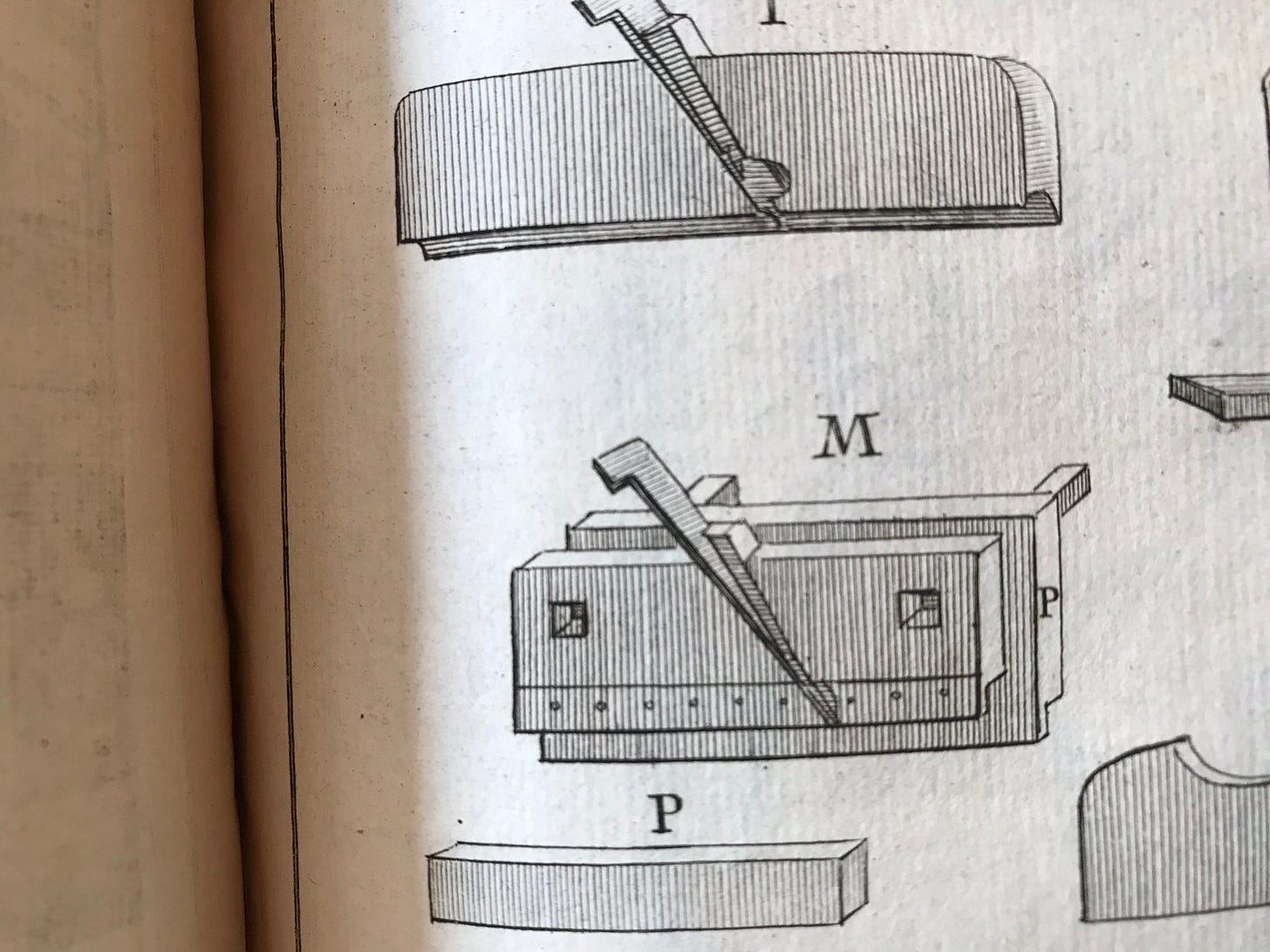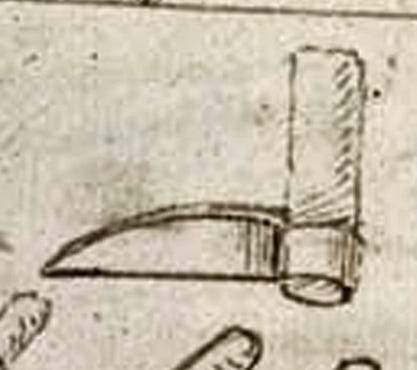Tools in 17th-century records
The bulk of my work is studying and copying 17th century (mostly) oak furniture. One question Jennie Alexander & I faced right from the start was “what is the tool kit?” We turned to several sources to learn what tools made these pieces. There’s evidence on the objects, some surviving tools and then documentary evidence; a couple of 17th century books but more commonly things like probate records and apprenticeship contracts.
In a later post, I’ll look at some of the published records like Moxon’s Mechanick Exercises and Randle Holme’s Academie of Armory, but for now I want to look at the lists found in probate records. Those continue to fascinate me more than 30 years into the study.
Just a refresher - a probate inventory was a list of a deceased person’s effects, usually to settle the estate, pay debts, etc. Values in New England were done in pounds/shillings/pence. An early one from Plymouth Colony is for John Thorp, a carpenter who died in 1633. Among his things were:
1 Great gouge £00-00-06
one gr brush & 1 little brush at 00-00-10
1 square 00-02-00
one hatchet 00-02-00
One Square 00-02-06
1 short 2 handsaw 00-02-00
A broade Axe 00-02-00
An holdfast 00-01-06
A handsaw 00-02-00
3 broade chisels 00-01-06
2 gowges & 2 narrow chisels 00-01-00
3 Augers Inch & 1/2 00-01-00
1 great auger 00-01-04
inboring plaines 00-04-00
1 Joynter plaine 00-01-06
1 foreplaine 00-00-00?
A smoothing plaine 00-00-00?
1 halferound plaine 00-01-00
An Addes 00-02-06
a felling Axe
The “inboring” planes are presumed to be molding planes, as is the “half round plane.” Sometimes this term is rendered “inbowing” - and off the top of my head, I think it was W.L. Goodman’s History of Woodworking Tools that decoded these terms. If not that, one of his articles which I’ll get to later.
But the tool I’m looking for is missing in Thorp’s inventory. It is in that of the somewhat aptly-named William Carpenter, Senior who died in 1659
Smale tooles att £00-10-00
one axe and a peece of Iron att 00-07-00
4 Iron wedges att 00-08-00
a foot and an old axe att 00-01-00
...one old axe...
the Lave and turning tools att 00-13-00
3 Crosscutt sawes 00-15-00
smale working tooles 00-12-00
smale sawes 00-08-00
an adds and 2 turning tooles att 00-06-00
three Joynters 3 hand plaines one fore plain 00-10-00
one bucse a long borrer one great goughe 00-10-00
Rabbeting plaines and hollowing plaines and one plow att 01-00-00
3 Drawing knives att 00-07-00
2 spokeshapes att 00-03-00
Chisells a gouge and an hammer and a Round shave att 00-19-00
2 adds att 00-08-00
one vise... 2 beetles...
a grindstone 00-15-00
2 axes att 00-06-00
It’s the plow plane - listed here with rabbets and hollows - you can’t make joined furniture without the plow plane - or a grooving plane, as it is sometimes called in sources like this. Throw in the bonus that Carpenter has a lathe and turning tools and he’s what I’m looking for. Below is the plow plane from Andres Felebien’s book Des Principes de L’Architecture - first printed I think in 1676. I know the 2nd edition was 1690.
I’ve only ever seen transcriptions of these inventories - and I might not be any better at deciphering the texts - but I have no idea what a “bucse” might be. The “beetles” are large wooden mallet with iron rings binding each end of the head. These are used to drive the wedges to split open logs. I used a sledgehammer instead. In 1651 John Hazell had:
4 wedges 2 beetleringes Croscutt saw £00-09-00
nailes gimblet & hinges 00-02-02
If only we had more detail in the 1641 inventory of John Briggs who had:
four axes four Iron wedges 3 hoes 2 froes £00-11-06
13 plaines & 3 plaining irons 00-06-06
84 smale tooles 00-14-00
old Iron 00-12-00
ii hand sawes three burnt sawes 00-08-04
in Nayles 00-01-00
worke Donn about a Chest 00-08-00
500 of board 01-05-00
I’d like to know about those 13 planes, the “84 small tools” as well as the “work done about the chest.” Briggs also has 2 froes - the tool that follows the beetle and wedges when splitting out stock for furniture and other work besides. the only period image I know of for a froe is from Randle Holme’s Academie of Armory, in the section on cooper’s tools:
There were some augers listed above, those are for large holes in most cases. For smaller stuff, you need what George Bartlett had in New Haven Colony in 1669: “one wimble brace & 3 bits” worth two shillings. It’s a brace and bits, sometimes also called a piercer - same place, Lawrence Ward in 1678:
Augers, chissels and gouges, files, axis, adzes and squar £3-3
Sawes, a gouge, hamer, turning tools, piercer bits, saw plates £1-14
A parcel plows and plains saws pinsers £3-14
hooks and hinges rings and lott old iron £2-1
This is a big topic, I have collected lots of these inventories references and other documentary evidence as well. I’ll keep coming back to this subject from time to time.





Peter: Small world... My wife is a direct descendent of William Carpenter! He’s her great x 9 grandfather. The Carpenter family stayed true to the family name for generations. In fact we inherited a toolchest & most all its tools, built & used by Jonathan L Carpenter (1838-1905) and Walter Carpenter (1862-1933). Happy to report that they also had a plow plane in their inventory.
I would be very interested in your source for the probate records for William Carpenter!
I always loved historical research. Most of mine was mid to late 19th century. Most of the remaining written evidence is government documents, especially court records. It's just fascinating, piecing together a story from fragments.